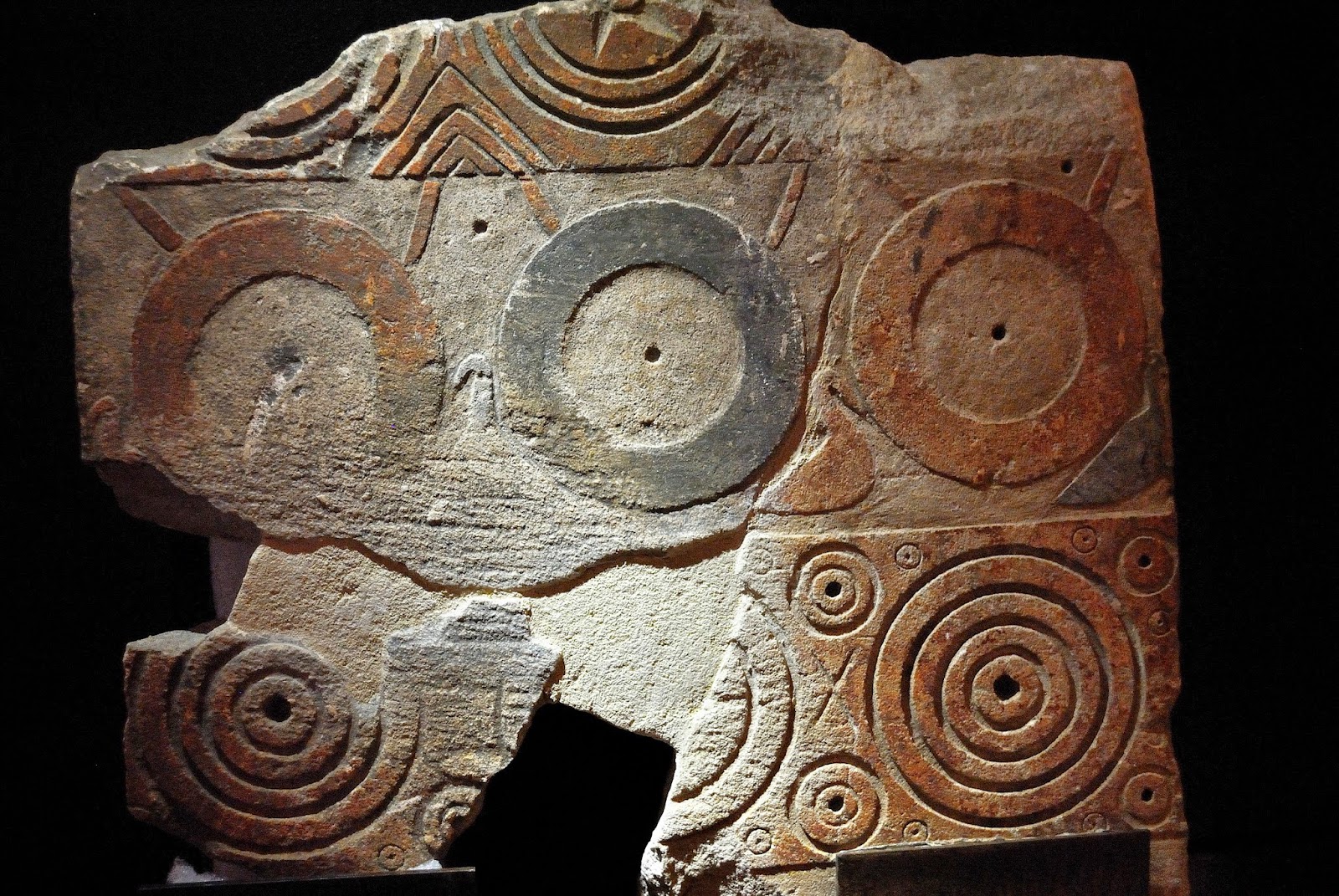The castle of Manfredonia
hosts the permanent exhibition of the Daunian stele (VIII – VI century BC).
The Daunian stele are
so intriguing because they unveil the culture, the ordinary life of the Daunians living 2700 years ago.
The stele have been
found during the ‘60ies around Manfredonia.
Silvio Ferri, archaeologist and member of Accademia Nazionale dei Lincei, undertook the challenge of deciphering the stele.
He got involved thanks
to Matteo Sansone, a chemist from Mattinata, who first realized the importance
of such stele.
Silvio Ferri had figured
out that the stele were conceived for funerary purposes.
From my point of view,
one of the most original interpretation of stele is given by Maria Laura Leone, researcher and founder in 2001 of artepreistorica.com.
Some of the stele are polychrome, like the one below: red and black.
Such Stele can be divided
in male and female ones.
The male ones are more simple as they describe males hunting or fighting.
According to deamuseum “The
earliest reference to opium growth and use is in 3.400 BC. When the opium poppy
was cultivated in lower Mesopotamia. The Sumerians referred to it as Hul Gil “the joy plant”.
Opiates reports that Galen lists its medical
indications, noting how opium "...resists poison and venomous bites,
cures chronic headache, vertigo, deafness, epilepsy, apoplexy, dimness of
sight, loss of voice, asthma, coughs of all kinds, spitting of blood, tightness
of breath, colic, the lilac poison, jaundice, hardness of the spleen stone,
urinary complaints, fever, dropsies, leprosies, the trouble to which women are
subject, melancholy and all pestilences."
Daunians used opium for both shamanic and therapeutic purposes.
Therefore, the thesis of stele as funerary objects evaporates, if you consider that:
- just few stele have been found nearby Daunian tombs.
- the surrounding of Daunian tombs have not returned a significant number of stele.
- the number of women stele overwhelm the male ones.
According to Maria Laura
Leone, the stele reveal the Daunian pantheon.
Therefore, her thesis
seems to me much more realistic.
Please click here, should you wish to view more pics
Please click here, should you wish to view more pics








.jpg)


Have you a medical proof of all this goodness?
ReplyDelete